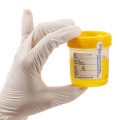
NANDA International (formerly the North American Nursing Diagnosis Association) is a professional organization of nurses interested in standardized nursing terminology, that was officially founded in 1982 and develops, researches, disseminates, and refines the nomenclature, criteria, and taxonomy of nursing diagnoses. A nursing diagnosis is used to determine the appropriate plan of care for the patient. The nursing diagnosis drives interventions and patient outcomes, enabling the nurse to develop the patient care plan.
NANDA Nursing Diagnosis List
list or database of NANDA nursing diagnosis examples with their definitions that you can read to learn more about them or use them in developing your nursing care plans
Activity Intolerance: Insufficient physiologic or psychological energy to endure or complete required or desired daily activities.
Acute Confusion: Abrupt onset of a cluster of global, transient changes and disturbances in attention, cognition, psychomotor activity, level of consciousness, or the sleep/wake cycle.
Acute Pain: Unpleasant sensory and emotional experience arising from actual or potential tissue damage or described in terms of such damage; sudden or slow onset of any intensity from mild to severe with an anticipated or predictable end and duration less than 6 months.
Anxiety: Vague uneasy feeling of discomfort or dread accompanied by an autonomic response.
Bowel Incontinence: Change in normal bowel habits characterized by the involuntary passage of stool.
Caregiver Role Strain: Difficulty in performing family caregiver role.
Chronic Confusion: An irreversible, long-standing, and/or progressive deterioration of intellect and personality characterized by decreased ability to interpret environmental stimuli, and decreased capacity for intellectual thought processes manifested by disturbances of memory, orientation, and behavior.
Chronic Pain: Unpleasant sensory and emotional experience arising from actual or potential tissue damage or described in terms of such damage. A duration of greater than 6 months.
Constipation: Decrease in normal frequency of defecation accompanied by the difficult or incomplete passage of stool and/or passage of excessively hard, dry stool.
Decreased Cardiac Output: Inadequate blood pumped by the heart to meet the metabolic demands of the body.
Deficient Fluid Volume: Decreased intravascular, interstitial, and/or intracellular fluid. This refers to dehydration, and water loss alone without change in sodium.
Deficient Knowledge: Absence or deficiency of cognitive information related to a specific topic.
Diarrhea: This nursing diagnosis is defined as the passage of loose, unformed stools.
Disturbed Body Image: Confusion in the mental picture of one’s physical self.
Disturbed Thought Processes: The state in which an individual experiences a disruption in such mental activities as conscious thought, reality orientation, problem-solving, judgment, and comprehension related to coping, personality, and/or mental disorder.
Excess Fluid Volume: Increased isotonic fluid retention.
Fatigue: An overwhelming sustained sense of exhaustion and decreased capacity for physical and mental work at the usual level.
Fear: Response to the perceived threat that is consciously recognized as danger.
Grieving: A normal complex process that includes emotional, physical, spiritual, social, and intellectual responses and behaviors by which individuals, families, and communities incorporate an actual, anticipated, or perceived loss into their daily lives.
Hopelessness: Subjective state in which an individual sees limited or no alternatives or personal choices available and is unable to mobilize energy on their own behalf.
Hyperthermia: Body temperature elevated above the normal range.
Hypothermia: Body temperature below the normal range.
Imbalanced Nutrition: Less Than Body Requirements: Intake of nutrients insufficient to meet metabolic needs.
Imbalanced Nutrition: More Than Body Requirements: Intake of nutrients that exceeds metabolic needs.
Impaired Dentition: Disruption in tooth development or eruption patterns or structural integrity of the teeth.
Impaired Gas Exchange: Excess or deficit in oxygenation and/or carbon dioxide elimination at the alveolar-capillary membrane.
Impaired Oral Mucous Membrane: Disruption of the lips and/or soft tissue of the oral cavity.
Impaired Physical Mobility: Limitation in the independent, purposeful physical movement of the body or of one or more extremities.
Impaired Swallowing: Abnormal functioning of the swallowing mechanism associated with deficits in oral, pharyngeal, or esophageal structure or function.
Impaired Tissue (Skin) Integrity: Damage to a mucous membrane, corneal, integumentary, or subcutaneous tissues.
Impaired Urinary Elimination: Dysfunction in urinary elimination.
Insomnia: A disruption in the amount and quality of sleep that impairs functioning.
Impaired Verbal Communication: Decreased, reduced, delayed, or absent ability to receive, process, transmit, and use a system of symbols.
Ineffective Airway Clearance: Inability to clear secretions or obstructions from the respiratory tract to maintain a clear airway.
Ineffective Breathing Pattern: Inspiration and/or expiration that does not provide adequate ventilation.
Ineffective Coping: Inability to form a valid appraisal of the stressors, inadequate choices of practiced responses, and/or inability to use available resources.
Ineffective Therapeutic Regimen Management: Pattern of regulating and integrating into daily living. A program for the treatment of illness and the sequelae of illness that is unsatisfactory for meeting specific health goals.
Ineffective Tissue Perfusion: Decrease in oxygen, resulting in failure to nourish tissues at the capillary level.
Insomnia: A disruption in the amount and quality of sleep that impairs functioning.
Latex Allergy Response: A hypertensive reaction to natural latex rubber products.
Nausea: An unpleasant, wavelike sensation in the back of the throat, epigastrium, or throughout the abdomen that may or may not lead to vomiting.
Noncompliance: A behavior of a person and/or caregiver that fails to coincide with a health-promoting or therapeutic plan agreed on by the person (and/or family and/or community) and health care professional.
Powerlessness: Perception that one’s own action will not significantly affect an outcome; a perceived lack of control over a current situation or immediate happening.
Rape Trauma Syndrome: Sustained maladaptive response, violent sexual penetration against the victim’s will and consent.
Risk for Aspiration: At risk for entry of gastrointestinal secretions, oropharyngeal secretion, solids, or fluids into tracheobronchial passages.
Risk for Bleeding: At risk for a decrease in blood volume that may compromise health.
Risk for Electrolyte Imbalance: At risk for change in serum electrolyte levels that may compromise health.
Risk for Falls: Increased susceptibility to falling that may cause physical harm.
Risk for Impaired Skin Integrity: At risk for skin being adversely altered.
Risk for Infection: At increased risk of being invaded by pathogen organisms.
Risk for Injury: Vulnerable to injury as a result of environmental conditions interacting with the individual’s adaptive and defensive resources, which may compromise health.
Risk for Suicide: At risk for self-inflicted, life-threatening injury.
Risk for Unstable Blood Glucose Level: Risk for variation of blood glucose/sugar levels from the normal range.
Sedentary Lifestyle: A habit of life that is characterized by low physical activity levels.
Self-Care Deficit: Impaired ability to perform or complete activities of daily living for oneself, such as feeding, dressing, bathing, and toileting.
Situational Low Self-Esteem: Development of a negative perception of self-worth in response to current situation.
Urinary Incontinence, Functional: Inability of a usually continent person to reach the toilet in time to avoid unintentional loss of urine.
Urinary Incontinence, Reflex: Involuntary loss of urine at somewhat predictable intervals when a specific bladder volume is reached.
Urinary Incontinence, Stress: Sudden leakage of urine with activities that increase intraabdominal pressure.
Urinary Incontinence, Urge: Involuntary passage of urine occurring soon after a strong sense of urgency to void.
Urinary Retention: Incomplete emptying of the bladder.





1 Comment